It (almost) doesn’t matter what the intended therapeutic outcome is, for virtually everyone who is working in the business of cannabis processing, CBD / THC remediation proceeds through well recognised processing steps. The introduction of newer legislation has come the (justified) need to ensure the industry runs in a smooth and orderly manner in order to keep outputting products of defined quality. It doesn't matter where on the globe you are, processes are becoming enshrined in and outputs more and more needing to comply with strict standards from quality and legislative directives. % Limits of THC content for example is one of the biggest considerations in many countries right now and already set in many legislative goals.
Just like the pharmaceutical industry, the cannabis industry (in some states in the US for example) is required to carry out a barrage of chemical testing and analysis, protecting against the presence of contaminants, or heavy metals or pesticides in their final products. Processes, test methods and remedial steps such as analytical testing or metals remediation (metal scavenging) is already well established in pharma and readily able support this market.
analysis, protecting against the presence of contaminants, or heavy metals or pesticides in their final products. Processes, test methods and remedial steps such as analytical testing or metals remediation (metal scavenging) is already well established in pharma and readily able support this market.
But back in manufacturing, its not about elegant chemistry or fancy techniques, as usual, the most efficient processes win. New processing steps or emerging technologies may manage to skip or cleverly combine multiple steps in the chemical workflows conferring efficiency advantages, but the endgame is always the same, controllably pure natural product, in commercially viable yields. Here's a quick review of the terminology relating to the processing steps and the various oil products that come from it, then we'll get started and look in more detail at the workflow and the types of technologies that can assist in the purification of these mixtures.
| CBD Concentrate | When oils of the (hemp typically) plant are first extracted by solvent, the product is called raw hemp extract. Raw extract can then be filtered and distilled to remove unwanted compounds (such as waxes and chlorophyll) to produce grades of oils differing in purity and CBD content. These refined oils are called CBD concentrate (also called CBD distillate). |
| Full Spectrum CBD Oil | Raw hemp oil extract contains terpenes as well as other cannabinoid compounds. Since it retains a native balance of cannabinoids and terpenes that would be found in the original plant, raw oils can be called full spectrum oils. |
| Broad Spectrum CBD Oil | This is full spectrum oil with the trace amounts of THC extracted. |
| CBD Isolate | CBD is a specific isolation and purification of the chemical cannabidiol (CBD). |
| CBD-Rich Oil/ Phytocannabinoid Rich (PCR) | CBD oil that been filtered an distilled to remove chlorophylls and waxes has a higher relative concentration of CBD than the raw extract, hence the term CBD-rich oil. |
| CBD-Infused Oil | This term can be used to describe either a product which has been infused (boosted) with purified CBD isolate or a product which has been infused with a CBD-rich, full spectrum or broad-spectrum concentrate. |
The Workflow

Although the fine details can vary, this is the basic process of CBD isolation / THC remediation that everyone is going to need to get a handle on. Whether all of the steps in the chart above are taken, or raw oils are just purchased in from bulk suppliers, purification remains one of the most important processes for compliance.
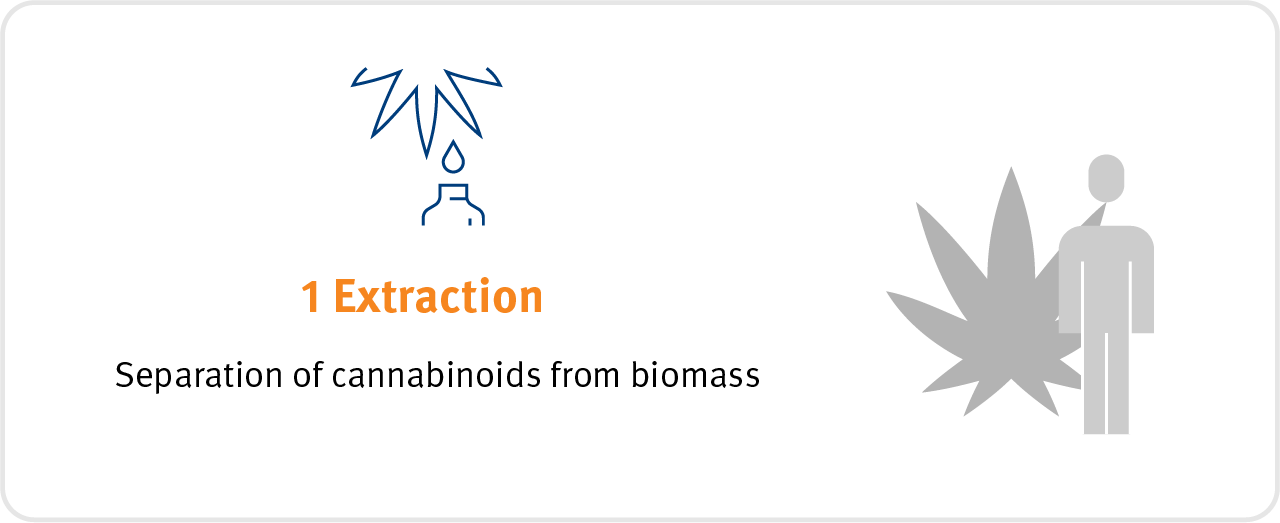
Separation of cannabinoids from biomass (plants, typically flowers, where concentrations of the natural products are higher), is achieved by soaking it in (cold) ethanol. Butane can also be used but risks the solvent remaining in the extract afterwards [government legislation has also called for limits on residual solvents such as butane, so solvent choice is quite important]. Don't use a sledgehammer to crack a nut either, supercritical extraction has been used as an alternative, but supercritical CO2 is such a good solvent, that it can actually extract too much out of the biomass, meaning the next steps are heavily burdened with additional components and thus downstream separation and purification processes need to be run with greater efficiency. In this case, the next step, winterization becomes essential - so chose your battles accordingly.
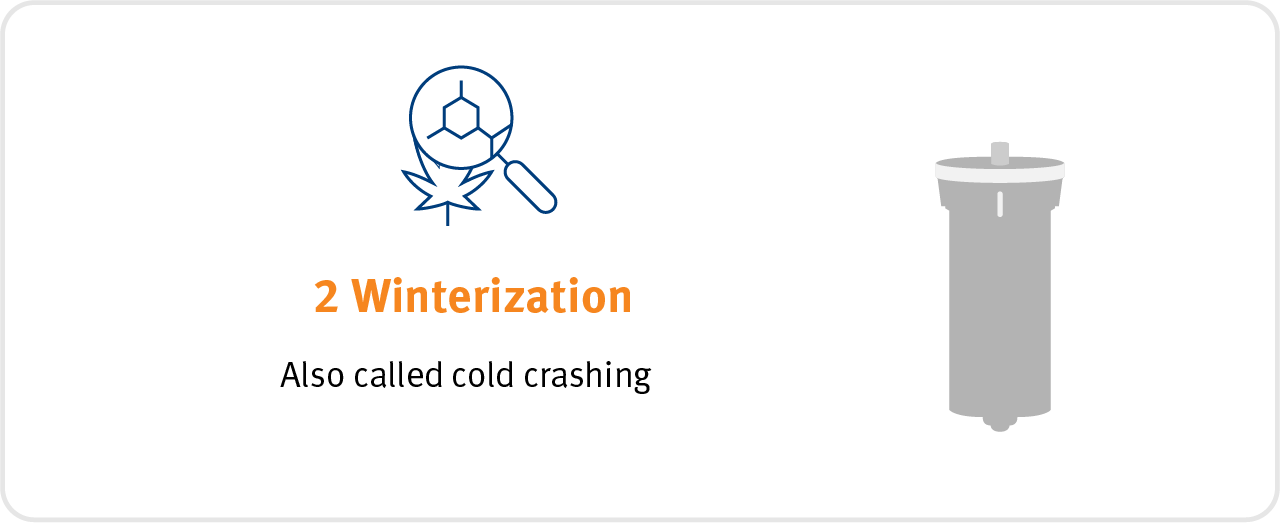
This is the separation of fats by virtue of the fact they are not as soluble in the solvent being used, as the other active plant chemicals. This is also called cold crashing, and can be carried out simply using beakers in a freezer. If the initial extraction was cold enough and in ethanol, this step can potentially be avoided, saving more time and solvent, and with a lower risk of final product quality failure.
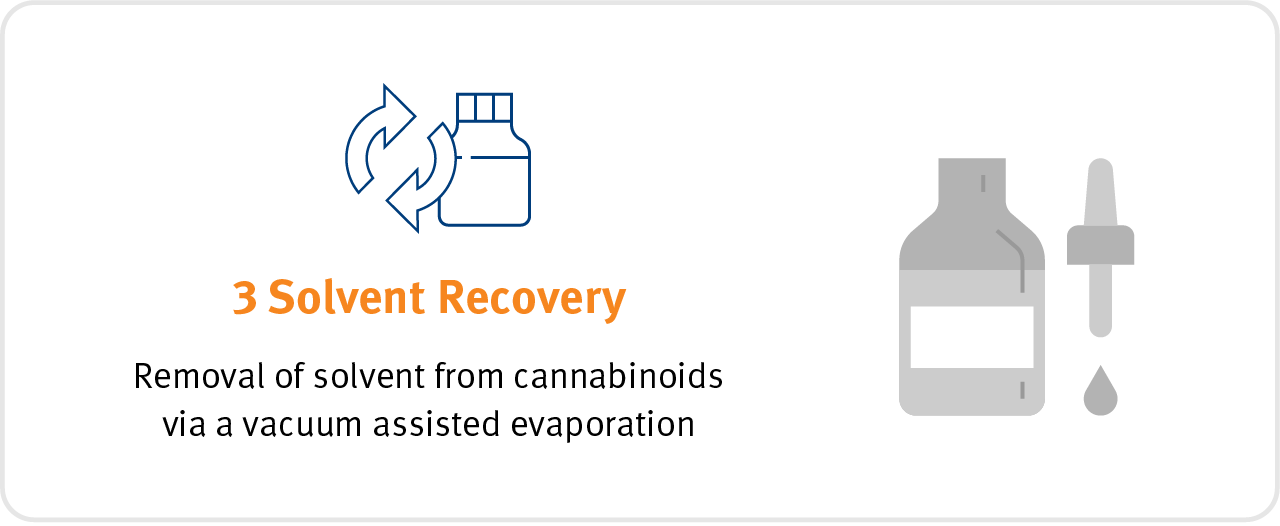
This is removal of solvent from cannabinoids via a vacuum assisted evaporation. Often these are performed in a rotary evaporator or various film evaporators. This is basically just a dry down step for the active organic compounds extracted so far.
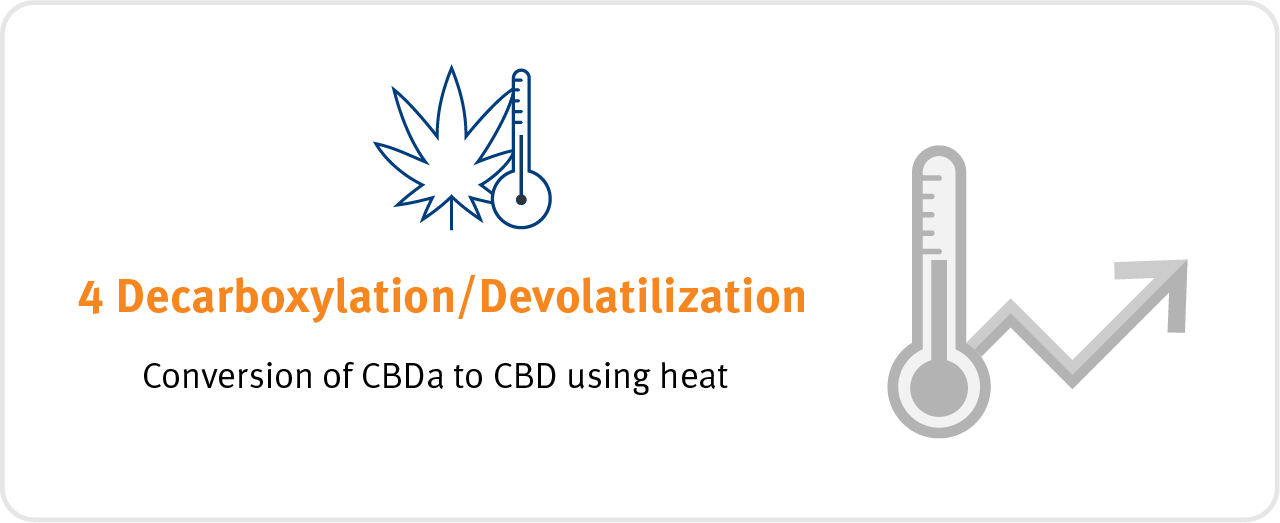
This is the conversion of CBDa to CBD using heat, which will further increase the yield. CBDa does not readily crystallize and evolution of CO2 makes the reaction quite energetic. Often, this is combined with the next step (distillation) which is also achieved by heating but we've listed decarboxylation here because technically this is a chemical change occurring aswell.
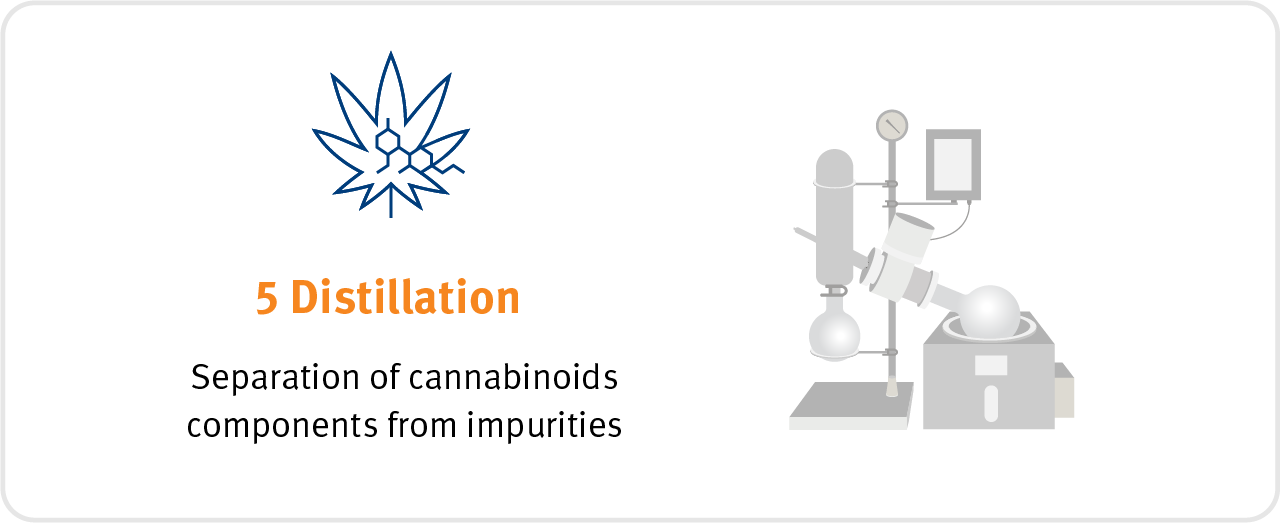
This is simply the separation of cannabinoids components from their impurities (such as terpenes and plant material) via vacuum assisted evaporation. This is often performed using classic chemistry laboratory short path distillation equipment (for batch processing) or wiped/rolled film evaporator (flow processes). High vacuum is preferred to minimize the need for heat, which can degrade those sensitive cannabinoids or change the overall activity profile.
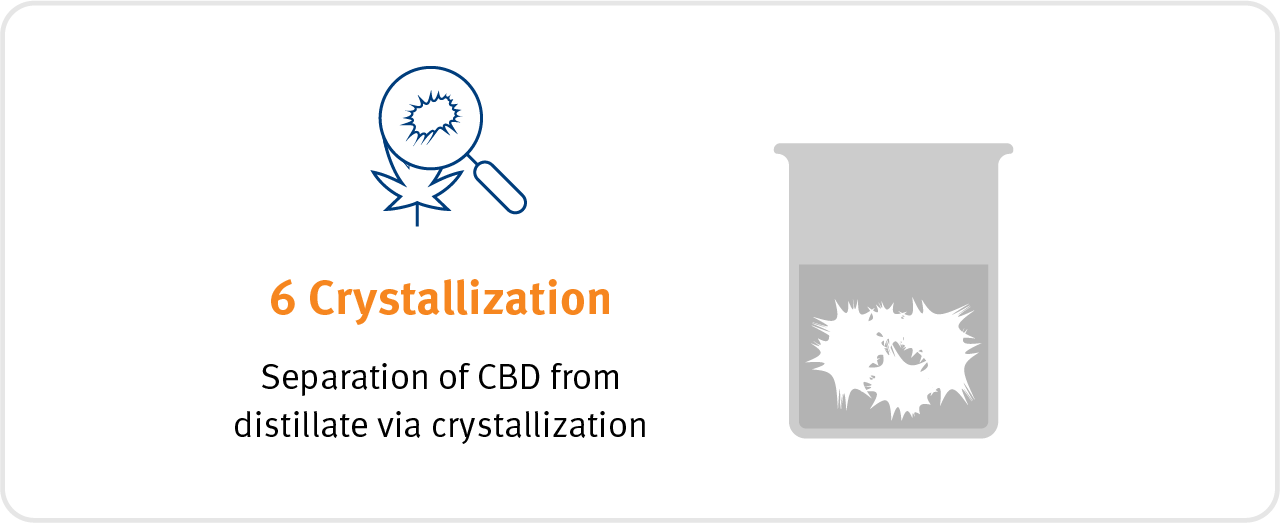
Based on their differential solubility, crystallization is the separation of CBD from distillate. Like winterization but more controlled, this is typically performed in beakers and a freezer. A pure CBD Isolate is obtained along with a cannabinoid rich mother liquor, which will also contain THC. This is often further purified to maximize yield.
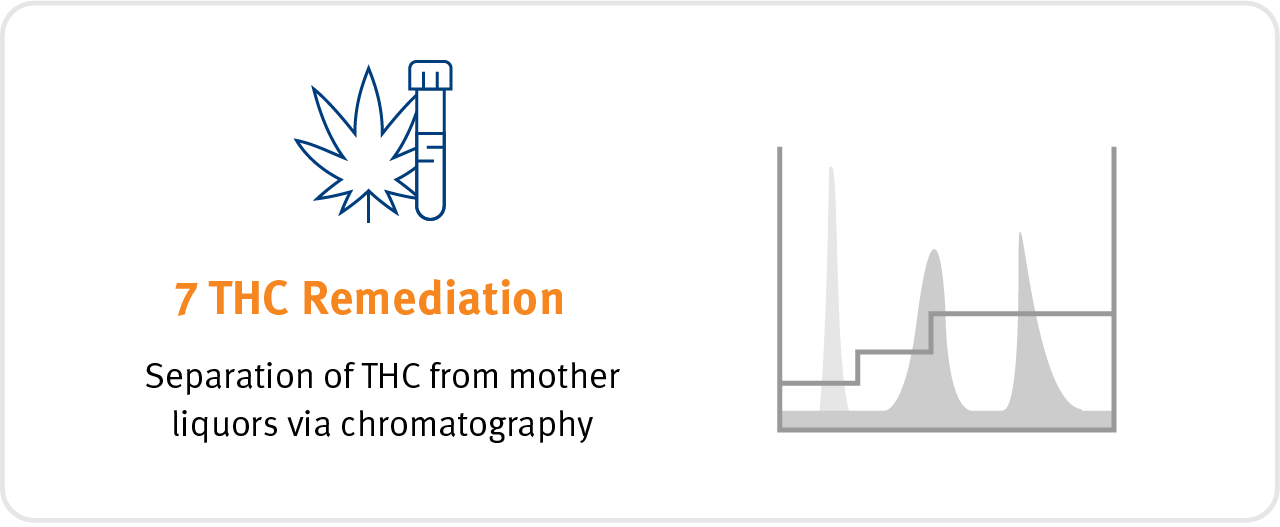
Remediation is the separation of THC via chromatography, using glass columns (less controllable) or much more accurate and effective prepacked and ready to go flash cartridges (these are like HPLC, but a lot bigger), such as those from Biotage.
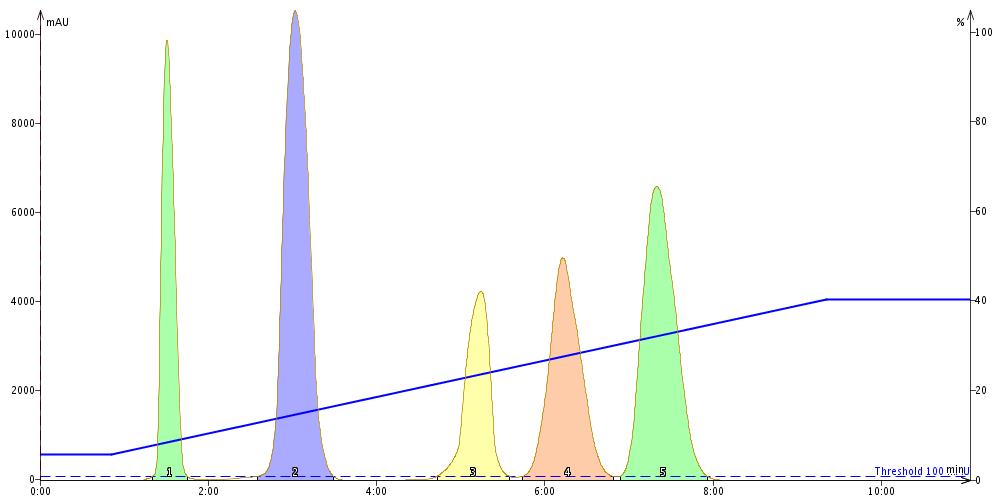
In terms of simplicity, a pre-packed disposable flash cartridge technology is one of the easiest to implement and also easiest to optimize and troubleshoot if things don't go to plan. Passing oil through the column causes it to separate into fractions and from the base of the column flows purified oil components.
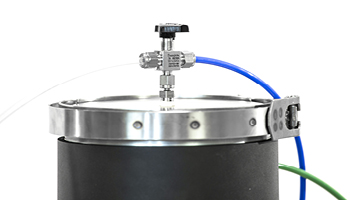
Once THC is removed, what is left is technically called CBD isolate which can be added back to mother liquors to create the "Broad Spectrum Oil" which is the THC free oil we discussed earlier. CBD isolate can be used directly, for example in medicine. This is the difficult stage for many people, as the regulations for processing, handling and utilization often impose legal limits on % THC content, depending on local and governmental guidelines.
From a material processing perspective, each stage in the workflow reduces the amount of product moving forwards, such that by the end, we could be working with only 2-3% compared to the weight of original plant (biomass). So being able to conduct each step efficiently to get the most final product through is key.
That’s the workflow and the chemistry, but the science will only take you on half of the journey. What we need to do, is to overlay some clever processing techniques to make this effective. Process economics is a critical topic - and the difference between make and break, so we will cover that more in detail in our next article; which will also highlights how one of the most important steps, the purification can be achieved. To read the article, click the link below!

 Organic Workflow
Organic Workflow Peptide Workflow
Peptide Workflow Scale-Up Flash Purification
Scale-Up Flash Purification  Sample Preparation
Sample Preparation Biomolecule Purification
Biomolecule Purification Oligo synthesis
Oligo synthesis Scavengers and Reagents
Scavengers and Reagents Service & Support
Service & Support Accessories & Spare parts
Accessories & Spare parts Investors
Investors Reports & News
Reports & News The Share
The Share Corporate Governance
Corporate Governance Calendar
Calendar Sustainability
Sustainability Our Offering
Our Offering Our History
Our History Our Locations
Our Locations Leadership
Leadership